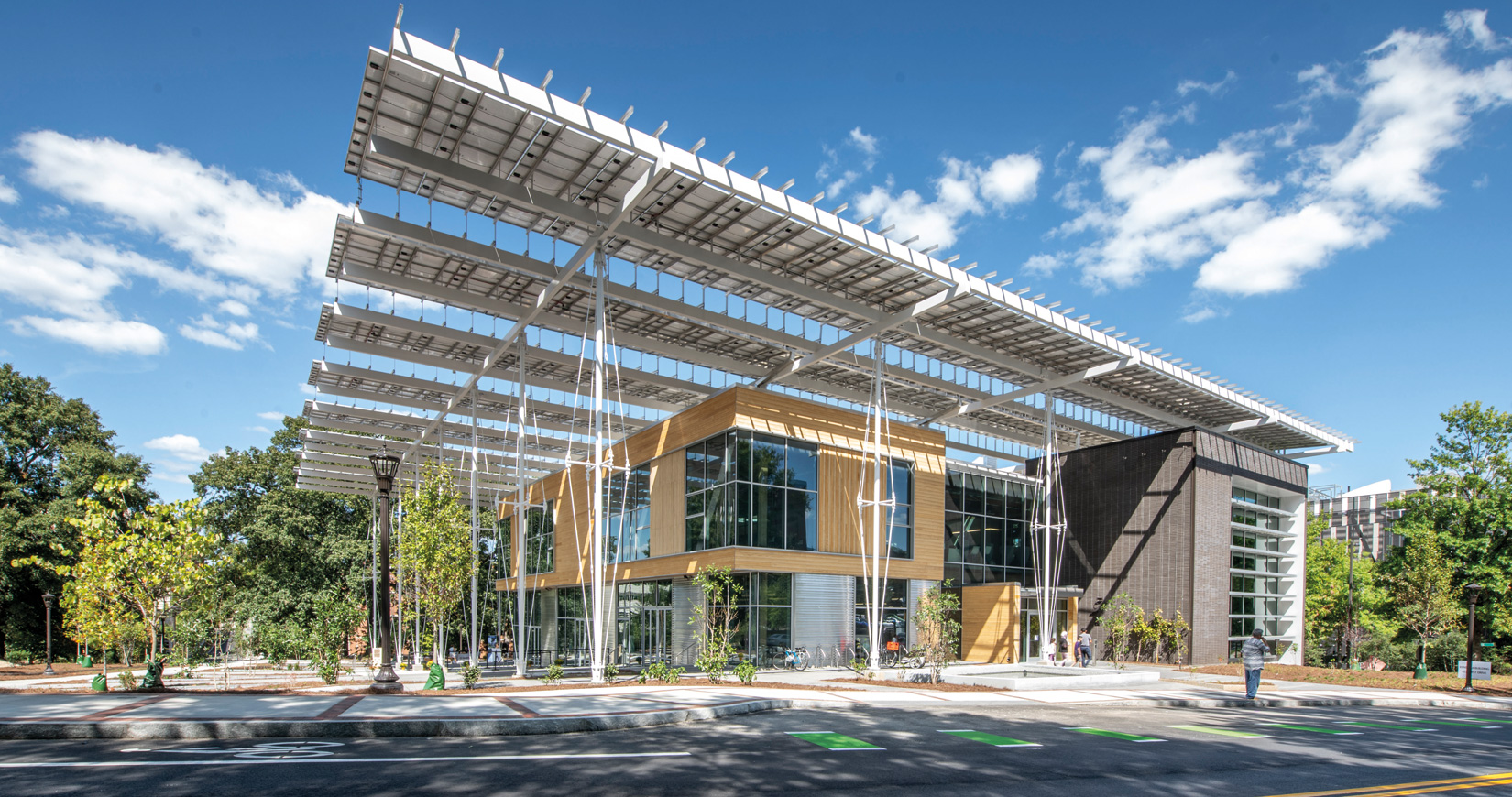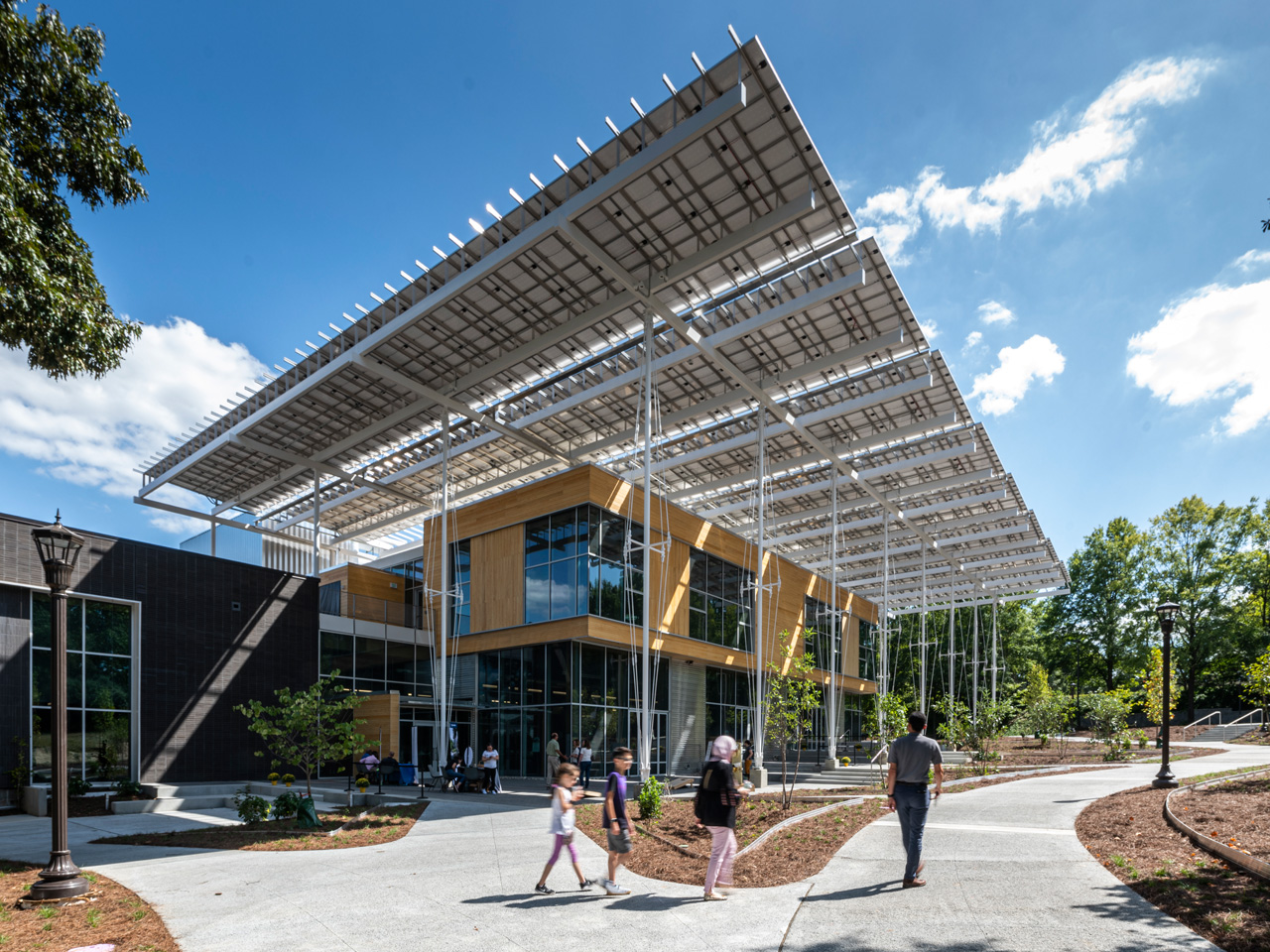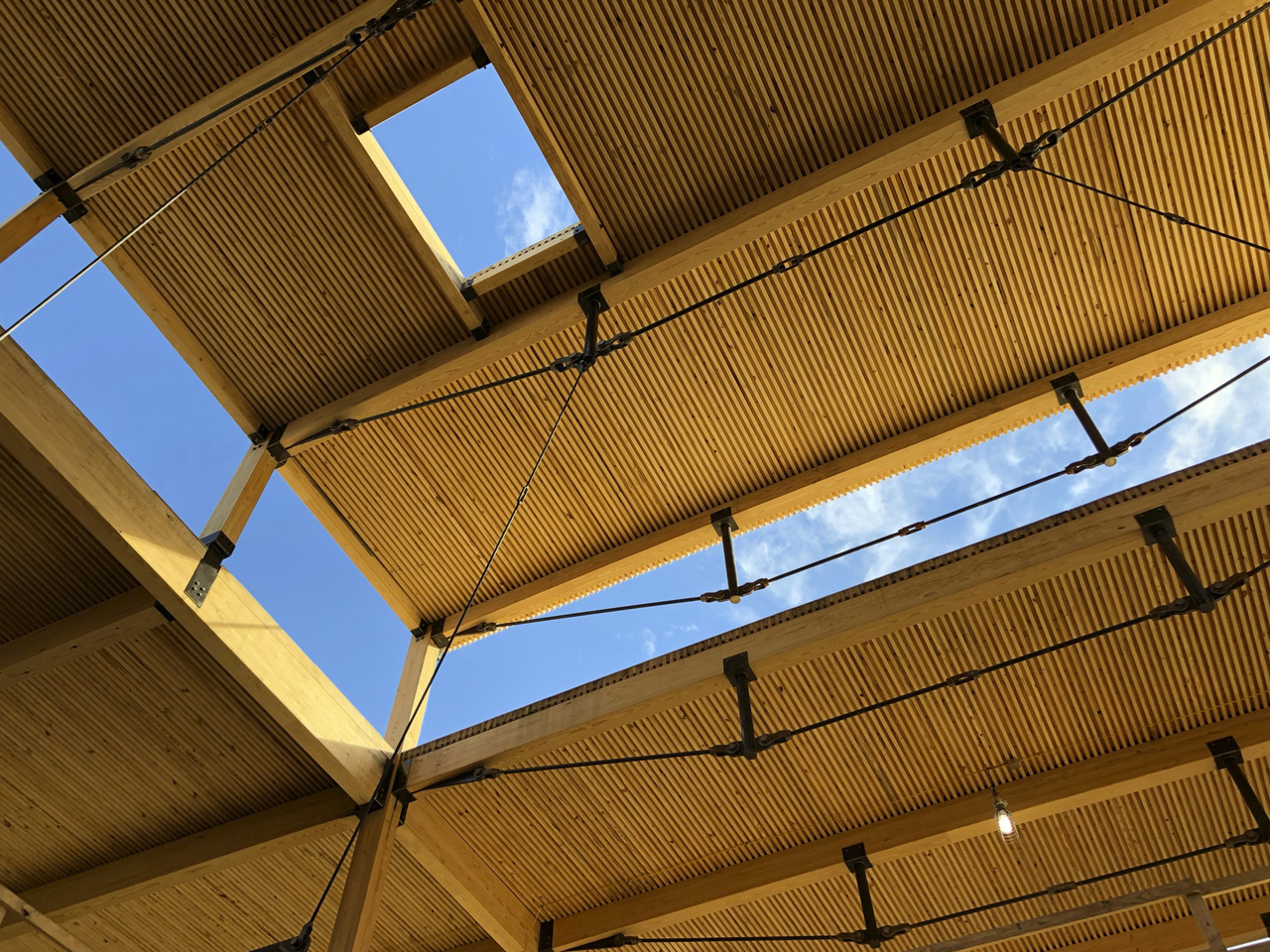Copyright © 2025 Motivate Media Group. All rights reserved.
The Kendeda Building for Innovative Sustainable Design has officially opened
New building at the Georgia Institute of Technology aims to generate more power than it uses.

The Kendeda Building for Innovative Sustainable Design at the Georgia Institute of Technology in the United States aims to generate more electricity from solar panels than it uses on an annual basis.
The 4366-square metre structure features a 917-solar panel canopy that harnesses energy and provides shade for the south and west façades and also collects rainwater, which is treated for all uses, including drinking.
Other sustainable elements of the design, by Lord Aeck Sargent and The Miller Hull Partnership, include the innovative use of reclaimed materials, composting toilets and the diversion of more waste from landfills than the facility sends to them.
The project is also home to a 400-square metre rooftop garden featuring a honeybee apiary, pollinator garden and blueberry orchard.
Georgia Tech President Dr. Ángel Cabrera said: “The Kendeda Building is an incredible and beautiful example of sustainable design, integration with nature, human inclusion and well-being.
“It is the most sustainable building of its kind in the [US] southeast. And thanks to our partnership with the Kendeda Fund it will inspire architects, civil engineers, business and policy leaders for generations to come.”
Dena Kimball, Executive Director of The Kendeda Fund, added: “The official opening of the building is the starting point, not the finish line.
“Now the real work begins, as Georgia Tech embraces the goals of the Living Building Challenge and demonstrates what is required to operate a building that gives more than it takes and creates a positive impact on the human and natural systems that surround it.”


The Latest
Highlights of the Biennale Architettura 2025
We shine a light on the pavilions from the Arab world at the Venice Architecture Biennale, on display until Sunday 23 November 2025
Read ‘Bold Design’ – Note from the editor – July/August 2025
Read identity magazine's July/August 2025 edition on ISSUU or grab your copy at the newsstands.
Things to Covet in June 2025
Elevate your spaces with a pop of colour through these unique pieces
Designing Spaces with Purpose and Passion
We interview Andrea Savage from A Life By Design – Living & Branding on creating aesthetically beautiful and deeply functional spaces
Craft and Finesse
EMKAY delivers a bold and intricate fit-out by transforming a 1,800 sqm space into SUSHISAMBA Abu Dhabi, a vibrant multi-level dining experience
An Impressive Entrance
The Synua Wall System by Oikos offers modularity and style
Drifting into Summer
Perennials unveils the Sun Kissed collection for 2025
The Fold
Architect Rabih Geha’s collaboration with Iwan Maktabi
From Floorplans to Foodscapes
For Ayesha Erkin, architecture was never just about buildings, but about how people live, eat, gather and remember
Between Sea and Sky
Cycladic heritage, heartfelt hospitality and contemporary design converge on Deos Mykonos, designed by GM Architects
A Fresh Take on ’70s Style
Curved shapes and colourful artworks bring vibrancy to this contemporary home with mesmerising nature views
















